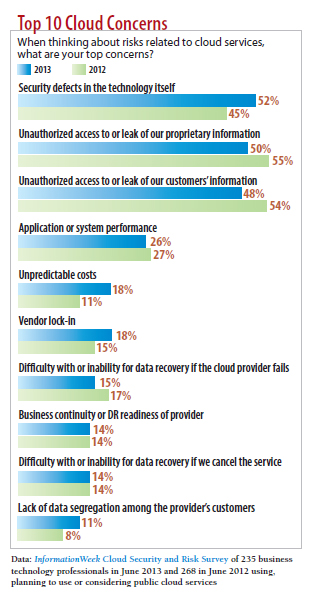Dell Rolls Out New Security Products
PARIS ─ Dell Technology Camp 2013 ─ Oct. 23, 2013 – Dell today announced the release of four products that tackle today’s biggest IT imperatives ─ including BYOD, cloud, network security, and compliance ─ and make Connected Security a reality for customers worldwide. Dell’s holistic and connected approach, which spans from endpoint to datacenter to cloud, helps solve today’s most complex security and compliance problems.
As part of Dell’s Connected Security portfolio, Delltrade One Identity Cloud Access Manager, Delltrade SonicWALL NSA 2600 next generation firewall, Delltrade ChangeAuditor 6.0, and Delltrade InTrusttrade 10.7 all provide new levels of protection, and empower organizations to collectively gather, analyze, report and act in a proactive way when managing security threats.
The major trends impacting IT today make it crucial for organizations to move away from managing security in silos, and embrace a strategy focused on connecting security to the infrastructure, information and applications that are critical to the organization. To protect data wherever it resides ─ on the network, in the cloud, or on mobile devices ─ Dell delivers Connected Security through solutions that provide predictive, context-aware security to detect and protect against unseen threats, as well as managed security service offerings with SecureWorks and Dell Data Protection and Encryption.
News Facts:
One Identity Cloud Access Manager offers web-based access control to help organizations safely and effectively use both on-premise and cloud-based applications.
Addresses the need to control access to cloud apps and other apps from multiple end points ─ including office desktops, laptops, and mobile devices ─ that expose organizations to major security vulnerabilities
Provides an increased layer of security with access management for both on-premise applications and web-based applications like Salesforce, Google Apps and office 365
Enables Connected Security by delivering browser-based access through a unified and secure single sign-on, with just-in-time cloud provisioning, federation, authorization, and audit capabilities for all use situations
The Dell SonicWALL Network Security Appliance (NSA) 2600 features Dell’s patented single-pass Reassembly-Free Deep Packet Inspection engine, and leverages the power of more than one million connected sensors around the world, so organizations can block the newest threats as they emerge.
Includes critical security capabilities such as intrusion prevention with sophisticated anti-evasion technology; network-based anti-malware with cloud assist CloudAV security; Dell SonicWALL’s Global Response Intelligent Defense (GRID) Network, which gathers input from millions of sensors to provide connected security against today’s increasingly connected threats; SSL decryption and inspection; content/URL filtering; application visibility; application control; and application bandwidth management
Delivers secure mobile access from a wide variety of platforms including Windows, Linux, MacOS, iOS, Windows 8.1 RT, and Android, enabling organizations to provide multilayered security and access control rules as part of a multilayered BYOD strategy
Ensures that customers always receive the necessary security without compromising network performance. The NSA 2600 gives organizations the power to solve their security and compliance challenges today, while helping them better prepare for tomorrow
In addition to world-class threat protection, the NSA 2600 offers a wealth of standard features vital to SMBs, site-to-site VPN, WAN failover and load balancing, and an integrated wireless controller for secure wireless networking, all while remaining easy to deploy and manage
ChangeAuditor 6.0 tracks, reports and alerts on vital configuration, user and administrative changes in real-time, without the overhead of native auditing.
Enables the viewing, correlation and filtering of change events, and provides the relation to other events over the course of time and in chronological order across the Windows environment. This affords a better understanding and forensic analysis of those events and trends
Eliminates unknown security concerns and ensures continuous auditing of critical assets by providing detailed and normalized information on a change, and any related events, in only one click
Delivers on the promise of Connected Security by detecting threats and patterns, enabling a rapid response from any device in real time
InTrusttrade 10.7 helps organizations address regulatory compliance and internal security through the secure real-time collection, compression and search of event logs.
Monitors user access to critical systems and applications, and enables forensic analysis of user and system activity based on historical event data
Collects events on user and administrator activity from diverse and widely dispersed systems and applications, and presents them in an easy-to-use and complete form suitable for reporting and analysis
Enriches the Dell SecureWorks offering with intelligent data feeds that capture crucial aspects of user activity on Windows systems, detecting internal threats in less time and with less overhead
Supports Connected Security that’s unified with the business by eliminating silos of information, connecting security information across data, user, network, applications, and services
Pricing and Availability:
Call for pricing on One Identity Cloud Access Manager, Dell SonicWALL NSA2600, ChangeAuditor 6.0, and InTrust 10.7.
All four Dell solutions are available globally through the channel. Call Dell or a channel partner for more information.
Quotes:
Matt Medeiros, vice president and general manager, Security Products, Dell Software
“Today’s mega-trends ─ cloud, BYOD/mobility, and big data ─ each introduce a magnitude of new threats and vulnerabilities. The new challenges these threats create for the IT environment ─ insufficient visibility, siloed security, compliance requirements and new reporting ─ all must be managed with limited resources. The only true line of defense is a comprehensive set of predictive, context-aware security solutions that break down silos and protect data where it resides. Dell Connected Security provides a dynamic solution portfolio that gives organizations the power to solve today’s biggest security and compliance challenges, while helping them better prepare for tomorrow.”
John McClurg, vice president and chief security officer, Dell
“In an age of increasing risk, the security industry is facing the need to dramatically change its approach to protecting organizations of all sizes across all industries, at all times. Dell is at the forefront of this shift. Our vision for Connected Security ─ a holistic and connected approach to security that spans from endpoint to datacenter to cloud ─ is the driving force behind these collaborative, performance-focused security solutions. The new solutions announced today further expand our Connected Security portfolio, providing CSOs like myself with the business intelligence, contextual richness and tools we need to mitigate risks and become business enablers.”
Mike Johnson, president and CEO, Cerdant
“We view Dell’s focus on security and its drive to deliver a comprehensive portfolio around its Connected Security strategy as an exciting development for channel partners like us. We are seeing great revenue potential in helping customers leverage Dell’s industry-leading end-to-end security solutions to tackle their most critical security issues and we look forward to continuing to build our arsenal of security solutions using Dell’s best-of-breed software products.”
Supporting Resources:
Dell Connected Security: www.dell.com/security
Twitter: www.twitter.com/dellsecurity
Facebook: https://www.facebook.com/DellHomeUS?brand_redir=1
LinkedIn: http://www.linkedin.com/company/dell
Dell YouTube: http://www.youtube.com/user/DellVlog
Dell Google+: https://plus.google.com/+Dell#+Dell/posts
About Dell
Dell Inc. (NASDAQ: DELL) listens to customers and delivers innovative technology and services that give them the power to do more. For more information, visit www.dell.com and http://software.dell.com
Join us at Dell World 2013, Dell’s premier customer event exploring how technology solutions and services are driving business innovation. Learn more at www.dellworld.com and follow #DellWorld on Twitter.
Article source: http://www.darkreading.com/perimeter/dell-rolls-out-new-security-products/240163235


 The official NSA website NSA.gov was
The official NSA website NSA.gov was 
 A Florida man has been
A Florida man has been 